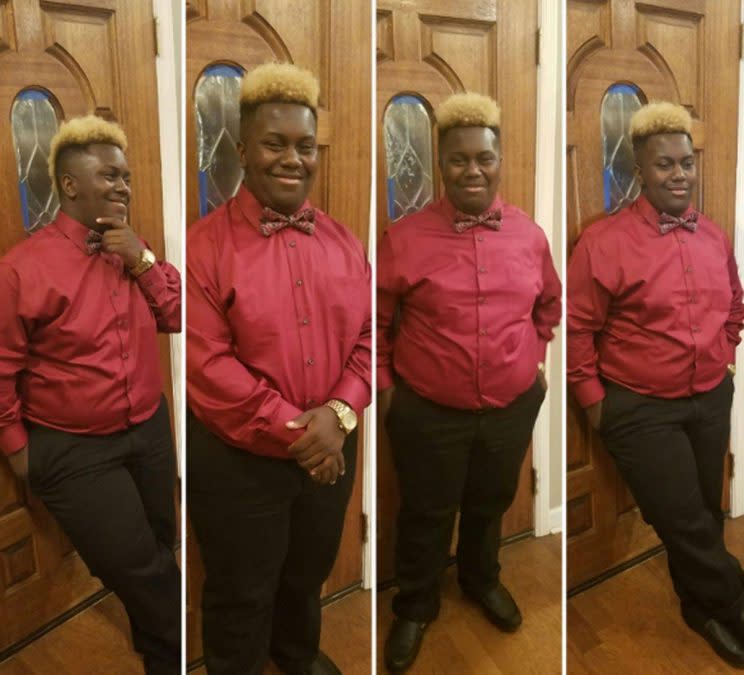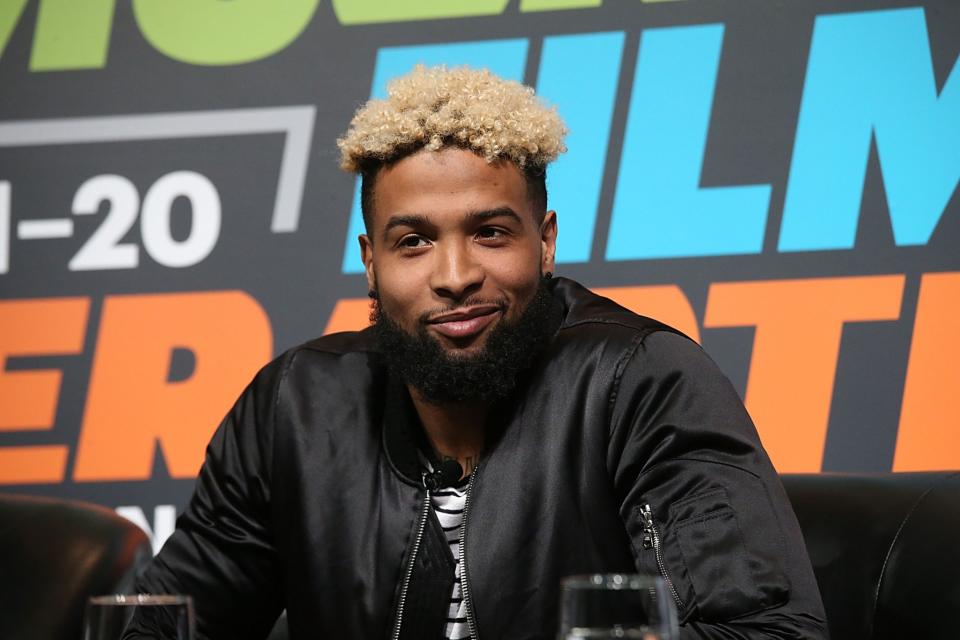Teen Suspended for ‘Distracting’ Odell Beckham Hairstyle

Another day, another bit of dress code drama at a high school that’s having real-life repercussions.
This time, it’s a story about 16-year-old Jaylon Sewell, a student at Neville High School in Monroe, La., who dyed his hair blond to mimic the hairstyle of New York Giants player Odell Beckham Jr. But Sewell, reported the New York Daily News, got much more than he’d likely bargained for once he showed up for school with his new ’do.

According to Sewell’s mother, Bonnie Kirk, her son and a few other young black male students were sent to the principal’s office for having their hair dyed a different color from their natural hues.
“They sent kids with dreads, maybe three or four that had some brown dye in. All were black boys,” Kirk tells Yahoo Beauty. “Some had a dark reddish-looking dye, darker than my son’s, in their hair. Some had Afros, and he said that was too nappy, and if he couldn’t get a comb through it, they couldn’t stay in school.” The students were allegedly taken out of class and told that they were not allowed to return until they dyed their hair back to its original color or cut it off. Kirk adds that white students with blond streaks or even green-colored hair were not included in the group.
The school handbook’s rules on hair are as follows: “Hair shall be neat, well-groomed, and clean all times and shall not obstruct the face. Shaved parts in the hair shall be limited to two (2) and each part shall not exceed three (3) inches in length. Numbers, designs, symbols, words, and phrases cut in the hair which are offensive or disrupt the educational process shall not be allowed. Hair styles and hair dyed outlandish colors which cause a disruption to the educational process shall not be allowed.”
According to the Daily News, Sewell spent the day of punishment outside of class and was also barred from class the next day, when he returned to school with the same hairstyle. But Kirk doesn’t agree that her son’s hair was causing a disruption.
“I told [Superintendent Brent Vidrine] Jaylon’s hair was not causing a disruption to the educational process, but he was causing a disruption to Jaylon’s educational process by denying him the right to attend classes,” she says.
The Neville High School administration did not return Yahoo Beauty’s request for comment.
But Kirk, who teaches English language arts at a juvenile detention center, alleges that the superintendent eventually admitted that the school could not bar kids from classes simply for dye jobs — but still suggested that Sewell change his hairstyle so as not to seem obstinate. Meanwhile, Kirk says, her son has since repeatedly been harassed by the school for other infractions, which the school has allegedly used as a tool to get him to cut his hair.
Kirk filed a complaint against the school in November, which is currently under investigation by the Department of Education’s Office for Civil Rights.
Stories about students — black students in particular — being harassed by schools over hairstyles make headlines regularly. As Shaun King noted, “I’ve said it before in other cases, but the family’s allegations reveal black culture itself being targeted. This is akin to Native Americans being told to cut their hair and change their names to look and sound more like Europeans.”
And administrators, some of whom are black themselves, often argue that the students look “unkempt” wearing their hair the way it grows out of their heads, or that it is “distracting.”
But too often it seems that the actual enforcement of the rule has caused an even bigger distraction than the hair.
According to Kimberly Seals Allers, founder of MochaManual.com, a parenting website for African-American families, “This is another outrageous example of black children being unfairly targeted and criminalized for doing routine things that white kids get to do all the time without an assumption of disruptive or rebellious behavior. This is the impact of institutional racism on our educational system, where unconscious bias makes some hairstyles, ‘disruptive’ and others ‘creative.'”
Seals Allers tells Yahoo Beauty that the school’s reaction to discipline and silence black children for “being expressive, mimicking a favorite athlete, or experimenting with their own hair” is “knee-jerk,” simply because such behavior is “viewed as a threat.” Further, she believes it’s not the job of administrators to police such expression.
“All children should be free to reasonably express their individuality with their clothes and hair as a normal course of childhood,” she says. “To be denied that, is simply unjust.”
Read more from Yahoo Style + Beauty:
School Apologizes for Girls-Only Assembly on Dress Code Violations
A High School’s New Anti-Natural-Hair Policy Is Causing Controversy
Teacher’s Note Complaining About Oil in a Student’s Hair Sparks Outrage
Follow us on Instagram, Facebook, and Pinterest for nonstop inspiration delivered fresh to your feed, every day. For Twitter updates, follow @YahooStyle and@YahooBeauty.

